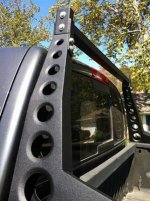Marankie
Plastic
- Joined
- Jun 11, 2010
- Location
- Newbury Park, CA
Hello,
I produce a lot of products which are boxed and welded sheet metal. This usually leaves the majority of the corners welded which I cannot bend in a brake. As I go into production, I need a more efficient method of removing all of the excess meld material other than hand held grinders and flap wheels.
I saw an episode of "How Its Made" featuring the production of metal caskets. They have a similar issue and solution using a large belt sander, which appears to be a custom machine:
How Its Made - Metal Caskets - YouTube (1:52 into the video)
I have also seen larger belt sanders which seem to be for woodworking but would seem useful if they offered abrasive belts for steel.
WMH TOOL GROUP/JET OES-80CS OSCLLTNG EDGE SNDR - Belt/Disc Sanders - 42W971|OES-80CS - Grainger Industrial Supply
Any help would be most appreciated!
Thank you,
Greg
I produce a lot of products which are boxed and welded sheet metal. This usually leaves the majority of the corners welded which I cannot bend in a brake. As I go into production, I need a more efficient method of removing all of the excess meld material other than hand held grinders and flap wheels.
I saw an episode of "How Its Made" featuring the production of metal caskets. They have a similar issue and solution using a large belt sander, which appears to be a custom machine:
How Its Made - Metal Caskets - YouTube (1:52 into the video)
I have also seen larger belt sanders which seem to be for woodworking but would seem useful if they offered abrasive belts for steel.
WMH TOOL GROUP/JET OES-80CS OSCLLTNG EDGE SNDR - Belt/Disc Sanders - 42W971|OES-80CS - Grainger Industrial Supply
Any help would be most appreciated!
Thank you,
Greg








